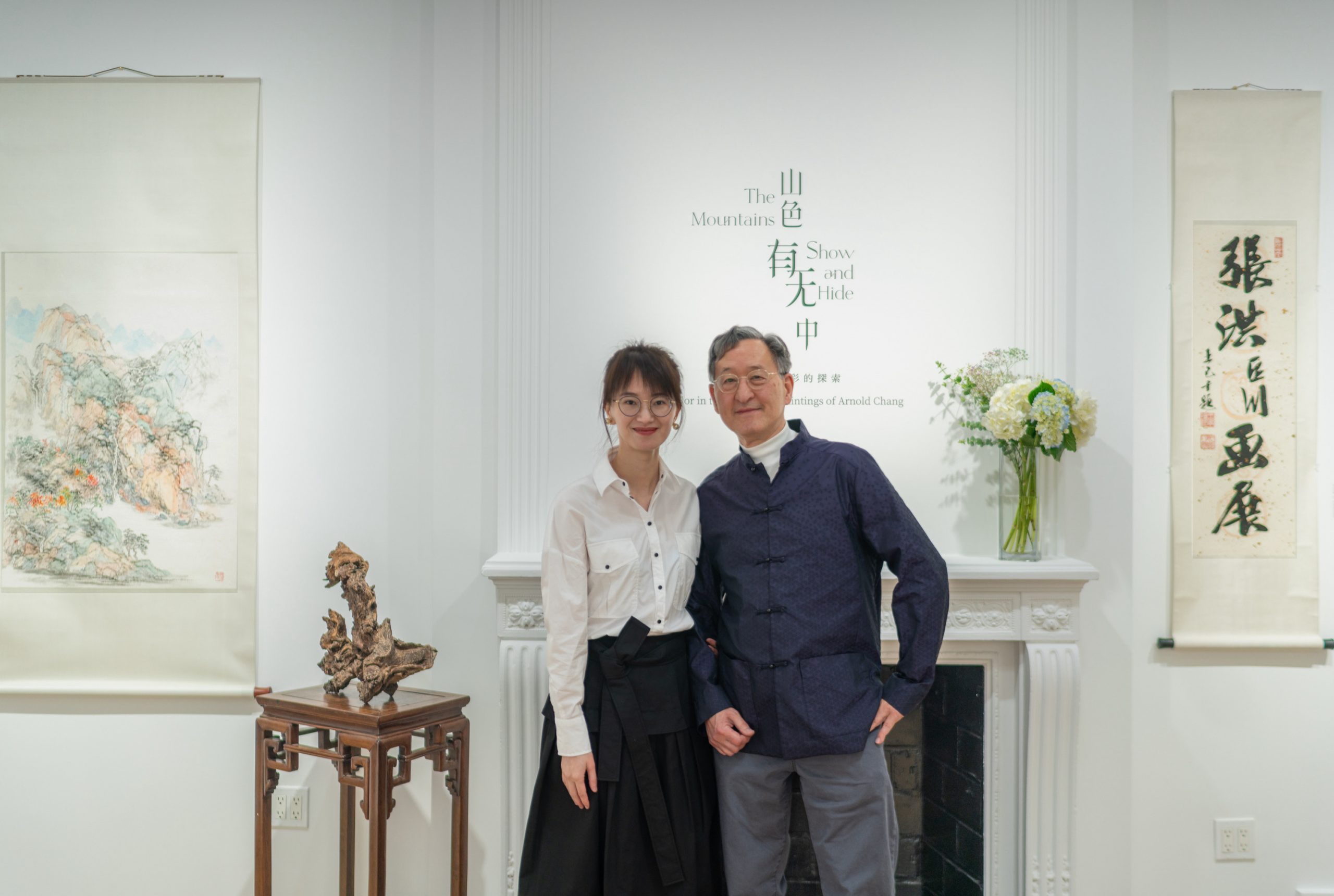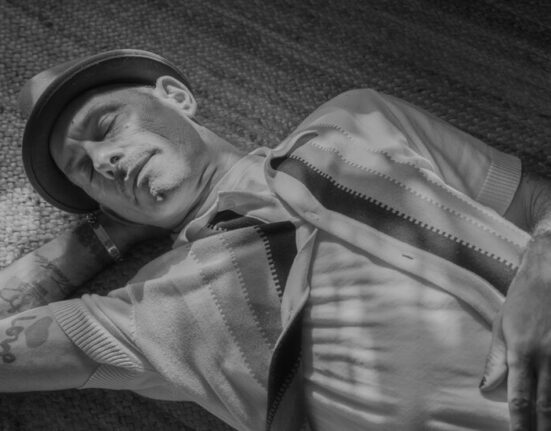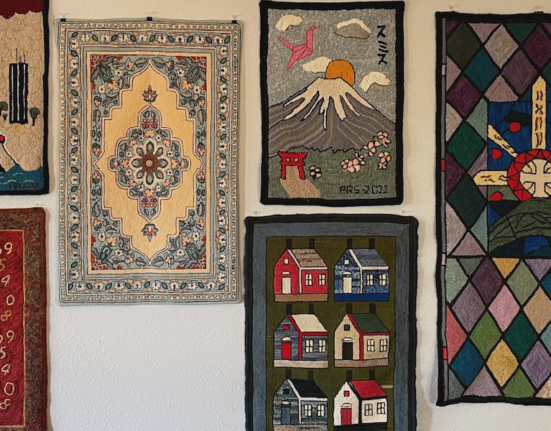Located on Manhattan’s Upper East Side, Fu Qiumeng Fine Art maintains a mission around fostering and promoting the research into and audience awareness of Chinese art—both historical and contemporary. Through initiatives driven by their Research and Production division, the gallery provides ongoing collaborations with scholars, art world professionals, and writers, bringing their work in the field to a broader audience.
For their most recent collaboration, Fu Qiumeng Fine Art invited Joy Xiao Chen, who is a PhD candidate in art history and former Metropolitan Museum of Art fellow, to curate the solo show “The Mountains Show and Hide: Color in the Landscape Paintings of Arnold Chang.” On view through June 22, 2024, the exhibition explores Arnold Chang’s innovative use of color and composition, as well as positions his work within the larger art historical context and trajectory of Chinese artistic traditions.
We recently spoke with both Chen and Chang to learn more about what went into creating this show, and what they hope to contribute to the dialogues surrounding Chinese art at large.
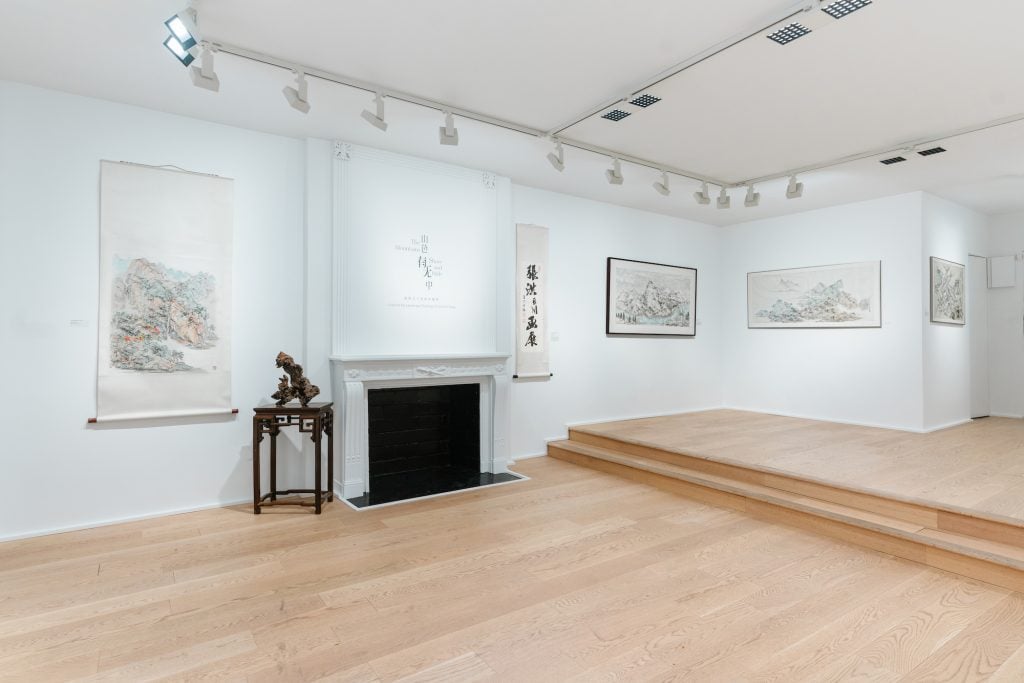
Installation view of “The Mountains Show and Hide: Color in the Landscape Paintings of Arnold Chang” (2024). Courtesy of Fu Qiumeng Fine Art, New York.
You were recently invited to curate Arnold Chang’s solo show with Fu Qiumeng. Can you tell us a bit about how this collaboration came about?
Joy Xiao Chen: I first met Arnold back in 2018 while I was researching on my dissertation on the Chinese literati artist Xiao Yuncong (1596-1669). We quickly bonded over our shared interest in 17th-century Chinese landscape paintings. Soon after, I started studying Chinese ink painting and connoisseurship with Arnold. Over the years, we’ve had many deep conversations about his artistic practice, especially his new experimentation with color. It’s fascinating that he began experimenting with color a decade ago, and I’ve been fortunate enough to witness the evolution of his works that beautifully combined color washes and ink lines since I moved to New York. I’ve found Arnold’s incorporation of color into Chinese landscape painting both intellectually stimulating and emotionally nuanced, and formed a unique narrative for a potential exhibition. Thanks to the support from FQM, I’ve had the incredible opportunity to curate this show for Arnold, showcasing his latest series.
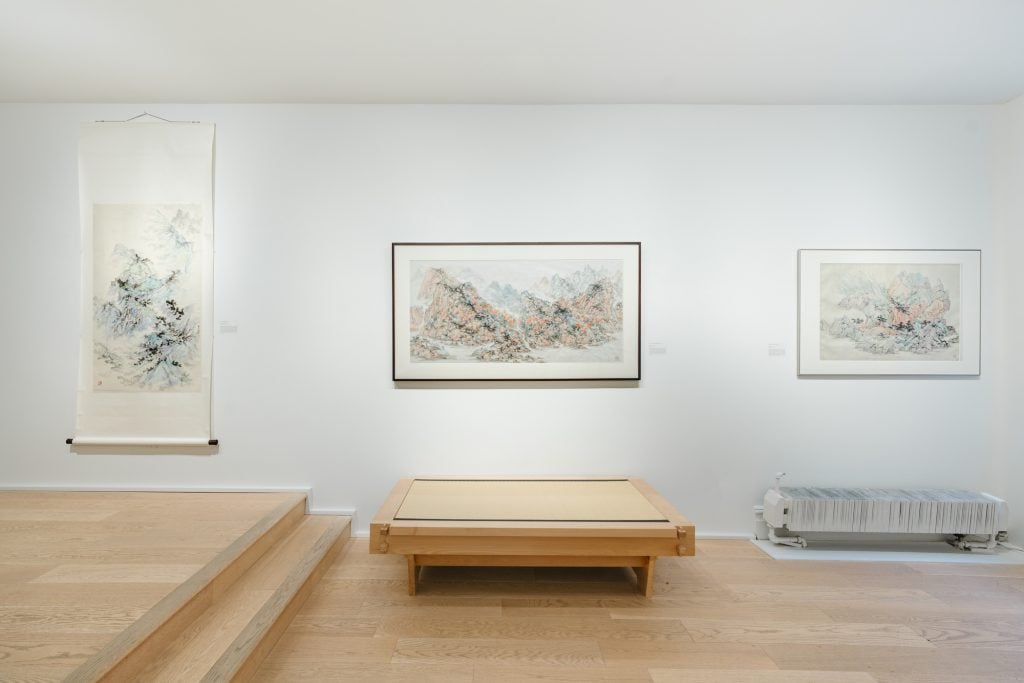
Installation view of “The Mountains Show and Hide: Color in the Landscape Paintings of Arnold Chang” (2024). Courtesy of Fu Qiumeng Fine Art, New York.
What was your curatorial process approaching this show?
JXC: My curatorial approach is fundamentally art historical, yet I strive to make the art accessible to Western audiences. I chose the selection of works that can be both a testament to the Chinese literati tradition and engaging for Western viewers. Through this exhibition of paintings, I present Arnold’s journey—how his own idea of color originated a few decades ago, his evolving mastery of integrating color with brushwork, and his recent liberation in the expression of color.
What do you hope the show inspires or conveys to visitors of the show?
JXC: I hope that the exhibition leaves viewers, whether they are Western or Chinese, with a richer appreciation for Chinese painting and visual culture in general. It would be wonderful if those who are familiar with Chinese art could revisit, and even challenge their own understanding of color within Chinese art history and find that color can convey the quintessential Chinese literati art just as brush and ink does.
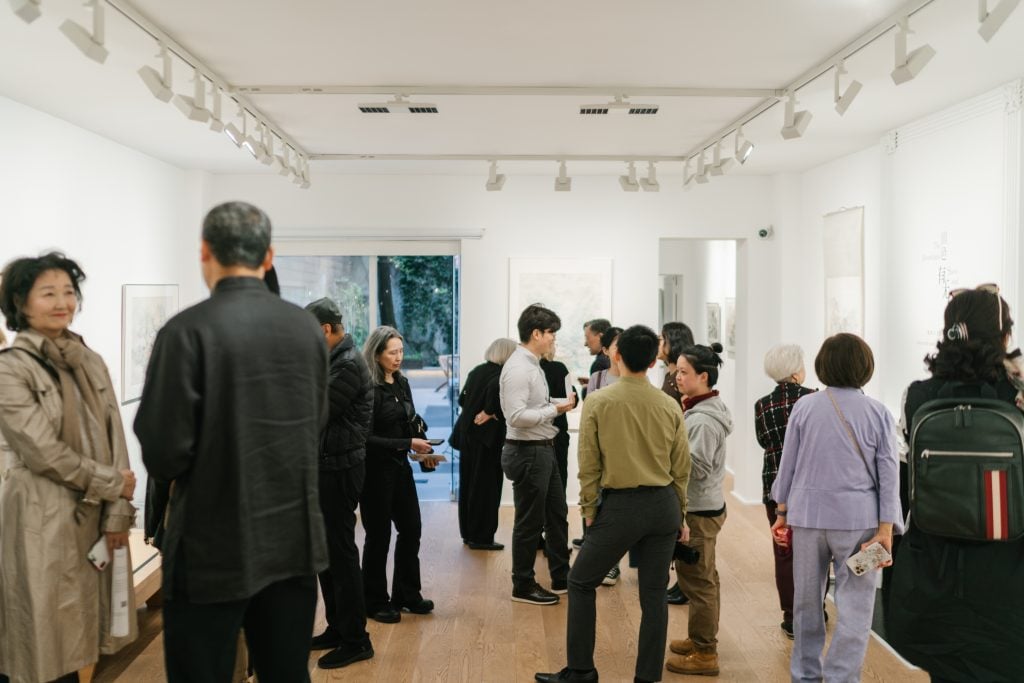
Opening reception of “The Mountains Show and Hide: Color in the Landscape Paintings of Arnold Chang” (2024). Courtesy of Fu Qiumeng Fine Art, New York.
How do you see the exhibition fitting within current dialogues or trends surrounding Chinese art and scholarship today?
JXC: This exhibition really taps into what’s going on with Chinese art today, which is all about finding its own voice, especially here in New York City where it can be a challenge. This exhibition is not only about displaying the paintings of a contemporary artist, it is about creating a bridge between past and present, making sure that tradition is not forgotten but instead used to enrich contemporary art. It is also about finding narratives and perspectives that resonate with local audiences here in New York, ensuring that Chinese art continues to thrive and speak for itself in the global art scene.
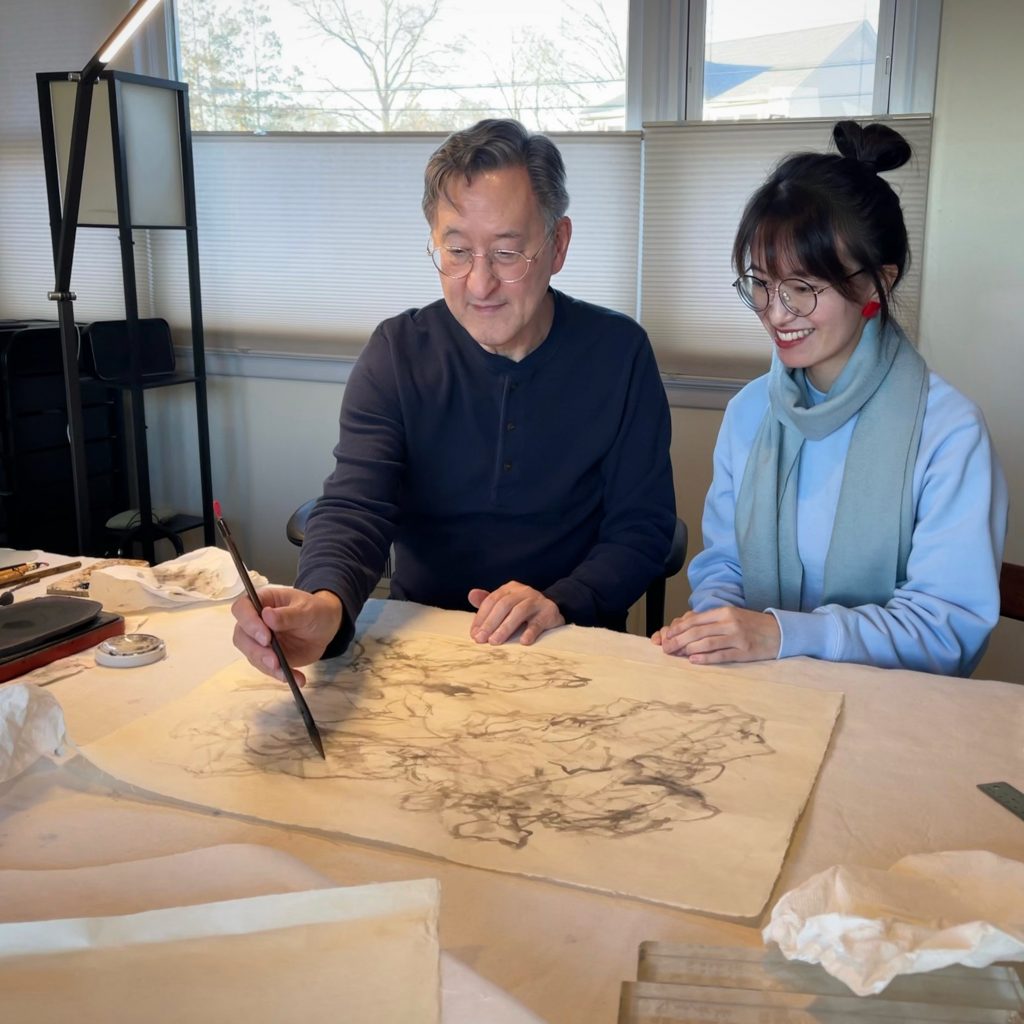
Artist Arnold Chang (left) and curator Joy Xiao Chen (right). Courtesy of Joy Xiao Chen.
Can you describe your experience working with Joy Xiao Chen?
Arnold Cheng: It has been a real pleasure working with Joy on this exhibition. Since my works are thoroughly grounded in the traditional Chinese literati painting aesthetic, it was essential that we find a curator who is knowledgeable about literati theory and practice but is also open to new approaches and interpretations. Joy was the obvious choice to curate a show of my paintings because of her knowledge and intellectual curiosity. She took the time to study my entire body of work, and carefully selected recent paintings that represent my ongoing artistic evolution, focusing on my use of color as a unifying theme. She peppered me with questions concerning both technique and intent, which encouraged me to analyze my own paintings and articulate my creative process.
What do you want viewers of your work to take away with them?
AC: One of the things about working with Fu Qiumeng Fine Art is the tremendous diversity of their clientele. Because of their scholarly yet user-friendly approach, there is a wonderful mix of museum curators, academics, and collectors. Collectors of traditional Asian art may be interested in checking out recent developments in Chinese or Japanese painting. Collectors of Contemporary Art may be exploring works by contemporary Asian and Asian-American artists. I hope that viewers of this exhibition will come away with a deeper appreciation of ink painting and will understand that art can be both traditional and contemporary at the same time.
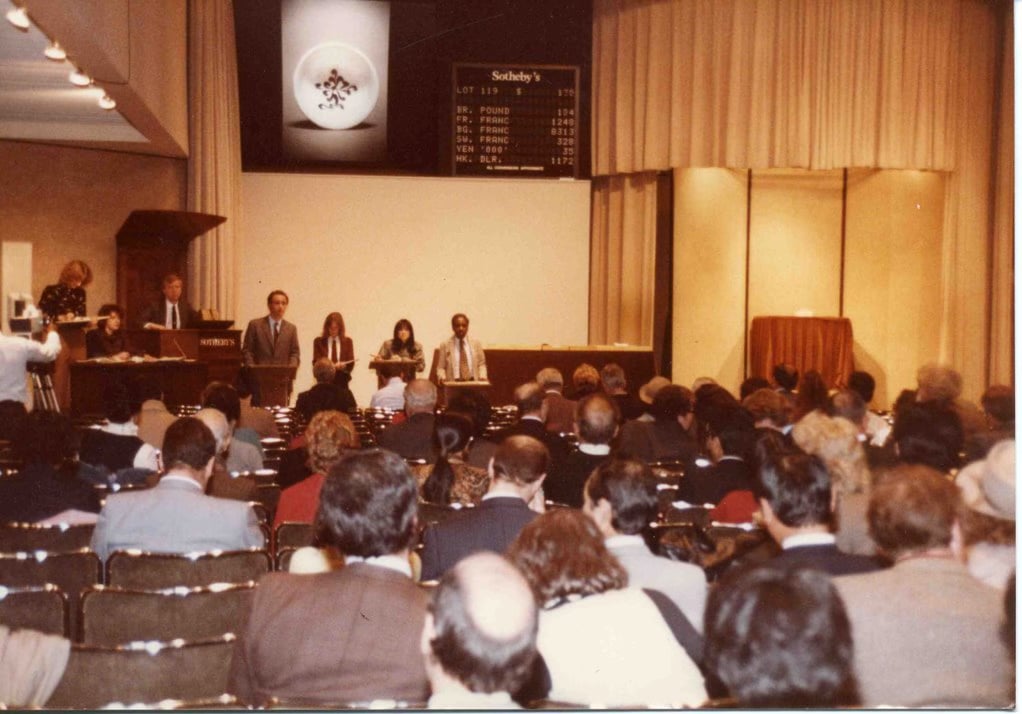
Sotheby’s live auction (ca. 1980s). Courtesy of Arnold Chang.
You were famously the founding head of the Chinese painting Department at Sotheby’s in the 1980s. In the decades since, what have you noticed change or shift within the art world regarding Chinese painting—either your own or others?
AC: When I began working at Sotheby’s in New York (Sotheby Parke Bernet at the time), there was no separate department for Chinese paintings and calligraphy at any of the major international auction houses. Chinese paintings were occasionally sold under the auspices of the Chinese Works of Art department, which focused on ceramics, bronzes, jades, furniture, and works in other media, but there were no in-house specialists for Chinese paintings. Throughout the 1980s, Sotheby’s and Christie’s established separate departments for Chinese paintings and calligraphy and through trial and error we were gradually able to establish a standard cataloguing format and built up a price structure based on public auction results for a broad range of artists.

Sotheby’s Hong Kong staff (ca. 1980s). Courtesy of Arnold Chang.
China’s international trade gradually opened, and by the early 2000s Chinese buyers began to dominate the Chinese art market as the interest in traditional culture has increased, especially for paintings and calligraphy, a trend that has continued in recent years. The biggest change in the market that I have witnessed certainly is the dramatic increase in the number of Chinese collectors of both Classical and Modern Chinese painting, as well as other categories of art. I am encouraged that young collectors have embraced “Ink Art,” which includes both traditional and experimental forms of ink painting.
“The Mountains Show and Hide: Color in the Landscape Paintings of Arnold Chang” is on view at Fu Qiumeng Fine Art, New York, through June 22, 2024.
Follow Artnet News on Facebook:
Want to stay ahead of the art world? Subscribe to our newsletter to get the breaking news, eye-opening interviews, and incisive critical takes that drive the conversation forward.

